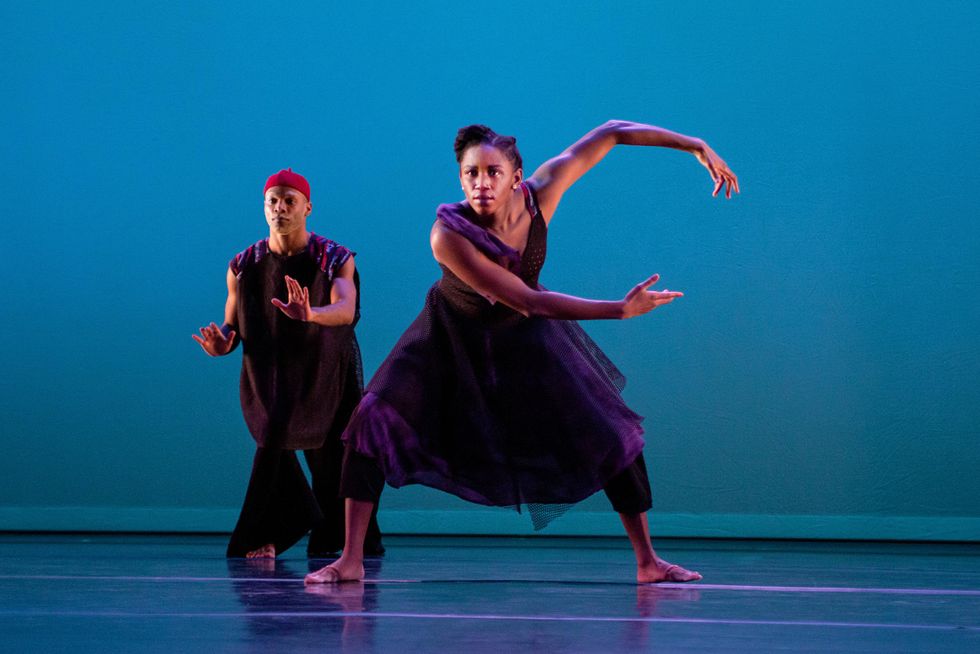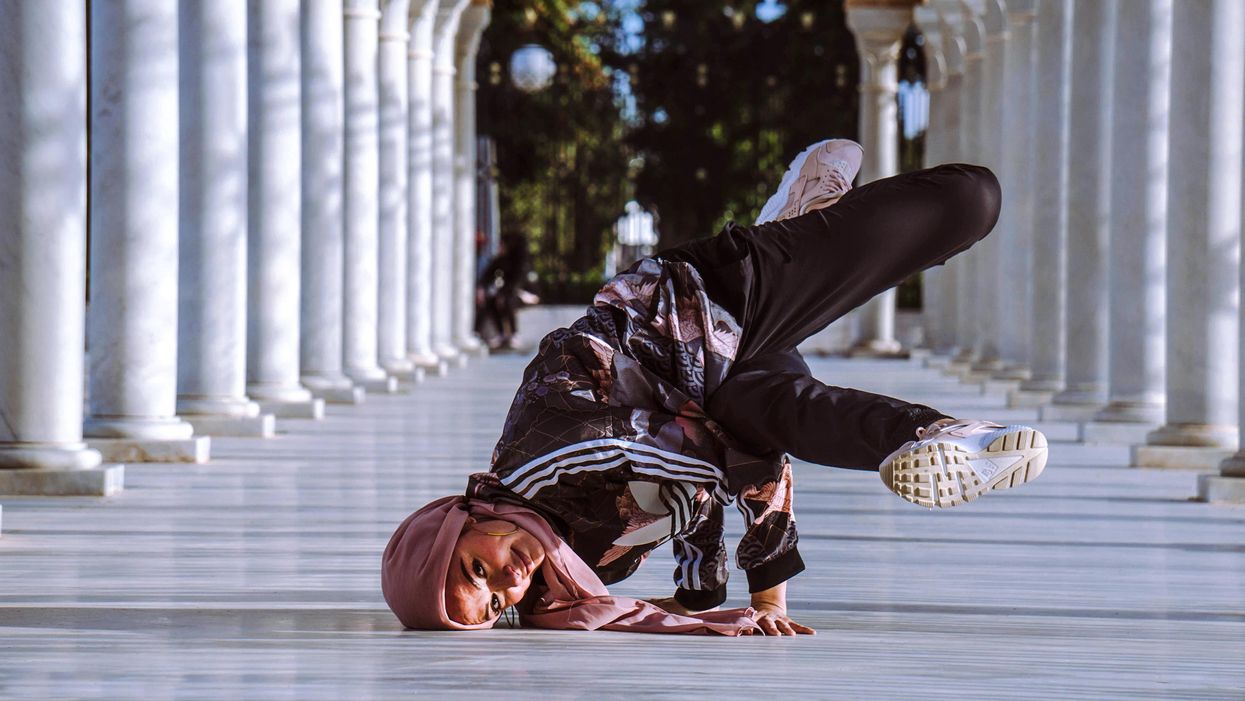As the Dance World Works to Become More Inclusive, Conservative Religious Dancers Still Encounter Challenges
Passover was going to be a challenge. During her years as a modern Orthodox Jewish student at the School of American Ballet, Dena Abergel had stayed with a family in the city every Friday so she could attend Friday night and Saturday classes without taking the train home to New Jersey, in accordance with her observance of the Sabbath. But as a teenage member of New York City Ballet, she requested three days off—the first two days of Passover followed by Shabbat—which, as far as she knew, was unprecedented for a company member.
Abergel, now 48, remembers struggling trying to calm her nerves outside the office of Peter Martins, the ballet master in chief at the time. “Talking to Peter about my personal religious observance, as a 17-year-old, was a little intimidating,” she says. “But I wasn’t going to miss Passover with my family to go to rehearsal.”
More than three decades later, as a faculty member at SAB and as the company’s children’s-repertory director, Abergel remains committed to making dance a field that is welcoming to people of all religious traditions. “If we are going to talk about diversity, equity and inclusion in dance, then we have to talk about including people of different faith backgrounds,” Abergel says.
Striving to improve “DEI,” as the three buzzwords are collectively known, is a priority for many dance leaders as they return to studios and stages this fall. By and large, the North American dance community is secular and leans politically to the left. For Orthodox Jews like Abergel, as well as some evangelical Christians, Catholics and Muslims, among others, carving out a career in dance while practicing the tenets of their faith remains a challenge.
Abergel continued to dance with NYCB for 18 years, so far the only modern Orthodox Jew to forge a long career there. She danced on Friday evenings, the start of Shabbat, even though an important rabbi once told her she would have to choose between observance and dancing. She was technically working, which is prohibited on Fridays starting at sundown, but dancing never felt like work to her, rather, like a gift and passion for her to share. Over the years, other observant Jews told her they saw her dancing as fulfilling the Hebrew concept of kiddush Hashem, which roughly translates to “sanctifying God.” “Using the gifts and talents I was born with was my way of sanctifying God, and living the life I was meant to,” Abergel says.
However, Abergel still honored the tradition of not using electricity on Friday nights, and ran down four flights of stairs at the theater instead of taking the elevator. Once back in her dressing room, colleagues would turn on the lights if they found her applying makeup in the dark.
In some ways, the arts community and religious communities seem to be growing further apart. Over the past five years, coinciding with the Donald J. Trump administration in Washington, some evangelical Christians in particular have become leerier of the performing arts, says Dr. Kutter Callaway, an associate professor at the evangelical Fuller Theological Seminary who studies the intersection of faith and culture.
“There’s a group that is re-entrenching,” Callaway says. “And you’re seeing regressive moves towards the arts. Anything that smacks of ‘culture’ might be viewed as coming from a suspicious source, one that might be trying to ‘undermine the Christian faith.’ ”
That “re-entrenchment” can include a call to avoid contact with artists who identify as LGBTQ, a prejudice that also turns up in some other conservative faith groups. (Some prominent Mormons have poured millions of dollars into campaigns against gay rights, for example.)
Callaway believes, however, that many evangelical churches are shifting their positions on sexuality, and that younger Christians, who grew up around more openly gay and trans people, are much more accepting.
Resisting societal change sometimes prompts certain groups to form their own artistic enclaves, Callaway says. Companies like Chicagoland’s Ballet 5:8 and the Jackson, Mississippi–based Ballet Magnificat! provide alternatives for Christian audiences and performers. “They are drenched in religious language,” Callaway says. “Parents and educators feel they can trust it.” But this approach to art-making can also limit the worldviews of those who use it as a refuge. “That’s how we got where we are today,” he says. “It’s as if some people are inhabiting different realities.”
Nowhere in America is a parallel religious culture moreobvious than in Utah, a state settled by rough-and-tumble miners as well as Mormon pioneers. And yet for a small metropolitan area, Salt Lake City boasts several remarkably good (and well-funded) dance companies.
“Dance and music and theater are a big part of the Mormon culture,” says Ballet West artistic director Adam Sklute, who is not a member of the church.
Ranked by budget, Ballet West is consistently one of the country’s top 10 ballet troupes. The company receives funding from The Church of Jesus Christ of Latter-day Saints Foundation and some socially conservative donors. Occasionally, Sklute says, he faces restrictions on how that money can be used. But what he feels makes Utah unique is the openness to acknowledging religious and social differences.
“I feel very good about it, because there are no surprises,” he says. Sklute is gay, and says he’s always felt accepted in Utah, whereas in other cities where he worked, he was sometimes surprised to encounter judgment.
“It’s a priority of mine to create a culture where everyone, no matter what background, no matter what their belief systems are, feels respected,” he says. Many of his dancers are from Utah, raised in Mormon or evangelical families. Yet as codified in the Ballet West employee handbook, “political speech” is not permitted at work.
“We don’t bring our religion or our politics into the studios,” Sklute says. “As long as everybody can work together and respect one another, we can treat each other with humanity and compassion.”
As a teacher, Jenifer Ringer makes a point of keeping any conversations about faith outside of the studio, and only talks about her own faith when students bring it up. “I want everybody in my studio to feel loved and affirmed and free to express themselves,” says the former NYCB principal, who now teaches in South Carolina.
Ringer grew up attending Protestant services, but initially put Christianity on the back burner after moving to New York City. She returned to the church, and watching Abergel, her fellow NYCB dancer, commit to Judaism inspired Ringer to advocate better for herself and her beliefs. In her 2014 memoir, Dancing Through It, Ringer credits All Angels’ Episcopal Church in Manhattan with buoying her during a year away from NYCB to heal from an eating disorder.
“Renewing that sense of identity and worth enabled me to go back into the dance world carrying a sense of worth with me,” Ringer says.
Now she’s gratified whenever young dancers or parents thank her for sharing her faith journey in the book. Occasionally parents ask if the professional dance world is a safe place for their children; a few are wary because dancers occasionally gain a reputation for embracing a party lifestyle. “But you can find those people anywhere, not just in ballet,” Ringer says.
Still, at times she feels she has to tread carefully when identifying publicly as a Christian because “sometimes people view Christians as judgmental,” she says. That’s not a principle she finds in scripture. “It’s so important to me to love the people around me, and to accept them. I want to show grace and mercy always,” Ringer says.
The Christian concept of grace is key not only to Breana Moore’s personal faith, but to her dance career. As an apprentice with Ronald K. Brown’s Evidence, A Dance Company, there’s nothing more surreal than performing in his signature work Grace. And yet she says transitioning from student in the South to professional dancer in New York City was trickier than she expected.
The daughter of a Baptist minister, Moore spent her teenage years training at New Ballet Ensemble in Memphis, where most students shared a similar spiritual DNA. In 2016, when Moore joined The Ailey School, she was surprised to find that her classmates often had far less experience with the iconic religious scenes in Revelations—including baptism and Southern ladies fanning themselves through sermons—than she did.
Teachers at Ailey encouraged her to take classes with Evidence, both because of her faith and her interest in West African dance. In 2019, Brown invited her to join the company as an apprentice.

Breana Moore in Ronald K. Brown’s Mercy
Ernesto Mancebo, Courtesy Evidence
“It’s beautiful to see him create works that are so unapologetically spiritual,” Moore says. “But he’s not necessarily beating people over the head with his own beliefs.” For instance, while Brown views Grace as a narrative about angels assisting mortals and all dancing together into heaven, Moore says he’s fine if dancers have alternative interpretations, as long as the choreography is performed with clear intention.
Muslim hip-hop dancer, choreographer and educator Amirah Sackett is much less metaphoric when it comes to faith and choreography. Her body of work includes a past touring project called “We’re Muslims, Don’t Panic.”
“I want to teach people about Islam,” she says. “I’ve traveled all over the country to a lot of small towns where I’ve been the only Muslim some people have ever met.”
Her virtual residency at Boston University earlier this year included a panel on dance and faith, where Sackett addressed the perceived dichotomy of her career. “For some people, it seems like a conflict to be a hip-hop dancer and a Muslim, but it makes 100 percent sense in my head,” she says. “There are Muslims who believe that a woman dancing in public is not particularly modest,” Sackett says. Some also disapprove of hip hop in general, but she suspects that prejudice stems from limited exposure. “There’s commercialized hip hop, and then there are the roots of hip-hop culture, which are intertwined with social justice.”
Whenever Sackett faces pushback for her approach, she knows she’s not alone. For instance, she once taught breaking at an Orthodox Jewish school in Chicago where girls were not allowed to dance when boys were present. “We had to close all the windows,” Sackett recalls. “It was really cool for me to be in a situation like that, where I got to talk to girls from a different faith group about similar modesty standards.”
She acknowledges that headscarves and dressing modestly are a practical challenge for some Muslim dancers, as is fasting during the month of Ramadan, when she has learned to avoid booking strenuous gigs.
“I’m always navigating,” Sackett says. “Ultimately, if you don’t have someone in front of you showing you that you can do this, then you have to forge your own path. So by being a hijabi Muslim who loves my faith, now we have an example.”




